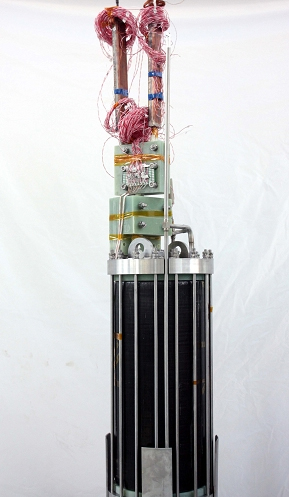Aug 29,2011|By
A Nb3Sn CICC superconducting test magnet was developed at High Magnetic Field Laboratory, Chinese Academy of Sciences (CHMFL). This is the first Nb3Sn superconducting magnet self-developed in China. The testing experiments were carried out inside a background magnet producing 7.5 T central magnetic field. When test magnet is charged up to 16 KA current, its central field reached 12.1 T. Performances under several operation conditions were also tested, and the results accord with the prediction analyzed in advance. The good DC performance declared the design, material selection and manufacturing processes of the test magnet are successful.
Nb3Sn superconductors have several advantages, such as high critical temperature, high critical field and a current carrying capability of higher than 2000A/mm2 under the conditions of 12T&4.5K. It is a generally preferred superconducting wire in the world for manufacturing high field superconducting magnets.
This is the first high field superconducting magnet made from Nb3Sn CICC in China. The R&D of this test magnet is a critical step in manufacturing the outsert superconducting magnet for the 40 T hybrid magnet at CHMFL. The goal is to find and solve possible technical problems in manufacturing superconducting outsert, and verify the coil design. Finally, it will provide the key fabrication techniques and experiences needed for superconducting outsert manufacture.
This test magnet, which is China’s first Nb3Sn CICC typed magnet, was developed by the superconducting magnet group at CHMFL. During the R&D process, the group members have solved many technique problems, such as coil winding technique, insulating, heat treatment technique, etc. They have made many important technological innovations and breakthroughs. This work laid an important technique foundation for the R&D of high field hybrid magnets in China.

Attachments Download: